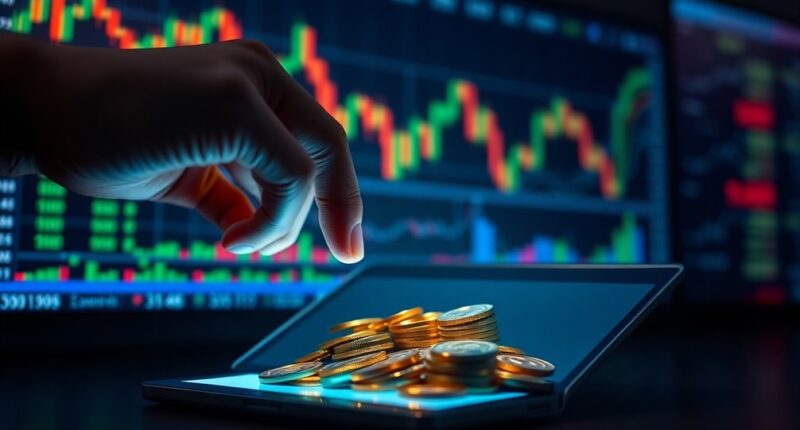In crypto, volume represents the total amount of a cryptocurrency traded within a certain timeframe, usually 24 hours. It reflects market activity and sentiment, indicating how engaged traders are. High volume suggests robust market conditions, allowing for easier trades without drastically affecting prices. Conversely, low volume might signal stagnation and increase the risk of notable price swings. By monitoring volume, you can gain insights into market trends and investor confidence. Understanding how volume interacts with price movements can significantly influence your trading strategy. Stick around to uncover various methods to analyze volume effectively.
Key Takeaways
- Volume in crypto indicates the total amount of cryptocurrency traded within a specific timeframe, usually 24 hours.
- High trading volume signifies increased market liquidity, facilitating easier execution of trades without major price impact.
- Volume analysis helps gauge market sentiment; rising prices with high volume suggest strong buying interest.
- Low trading volume can lead to increased price volatility and risk from large trades.
- Monitoring volume trends is essential for validating price movements and assessing market engagement.
Volume Measurement in Trading
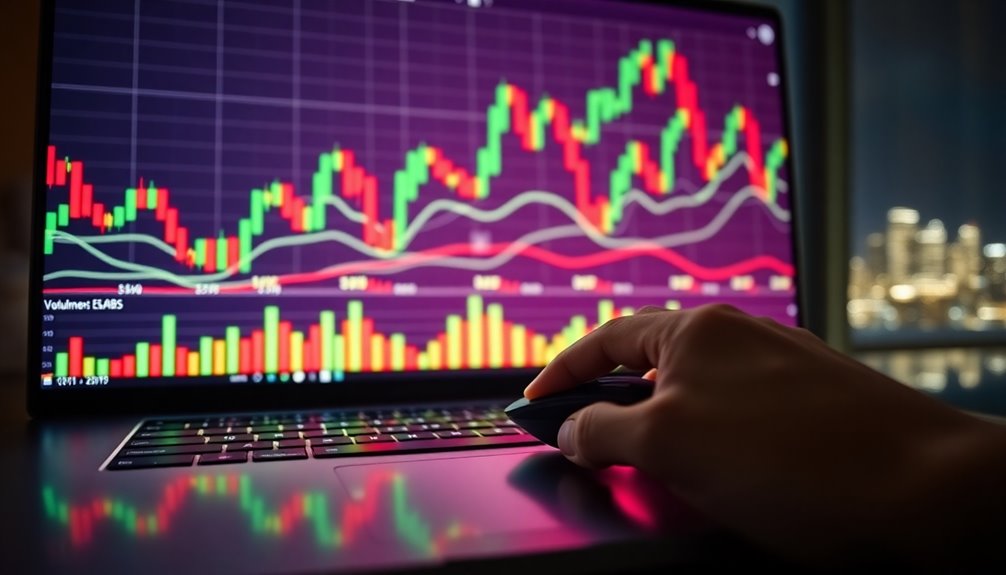
When you dive into the world of crypto trading, understanding volume measurement is essential. Volume represents the total number of purchases and sales of a cryptocurrency over a specific period, usually 24 hours. This metric is crucial as it indicates market activity and liquidity. Higher trading volume indicates increased market liquidity, which is vital for executing trades without significant price impact.
Each transaction, regardless of size, contributes to the overall volume count, which can be analyzed over various time frames to spot trends. Short-term trends emerge from daily volume while weekly or monthly data reveals more stable patterns.
Higher trading volumes often signal increased liquidity, making it easier for you to execute trades without impacting the price significantly. Monitoring volume can help you gauge market sentiment and the significance of price movements.
Understanding Trading Volume Dynamics

Understanding trading volume dynamics goes beyond just measuring market activity; it involves interpreting how volume interacts with liquidity and market sentiment.
High trading volume means increased liquidity, making it easier for you to buy or sell assets without impacting prices significantly. This liquidity minimizes the risk of price manipulation and slippage, fostering a stable market environment. Additionally, high trading volume contributes to market stability, making it difficult for manipulative practices to impact prices significantly. Furthermore, a robust trading volume often correlates with community engagement that can drive investor confidence and participation.
Conversely, low trading volume can lead to higher risks, such as significant price swings from single large trades. Additionally, volume reflects your peers' sentiment; rising prices with high volume often signal strong buying pressure, while declining prices with high volume suggest selling pressure.
Volume Reflects Market Activity

High trading volume provides a clear indicator of market activity and participant engagement. When you see high volumes, it often means the market is robust, allowing for easy buying and selling without drastic price shifts. Increased volume usually accompanies significant price movements, signaling market conviction. For instance, if prices rise alongside high volume, it suggests strong buying interest, hinting at a potential continuation of an uptrend. Additionally, this relationship highlights the importance of volume-based indicators in analyzing market trends. On the flip side, low trading volumes might indicate a stagnant market or lack of interest. In such cases, price movements can be unreliable and more prone to manipulation.
Pros and Cons of Volume

While trading volume plays a vital role in the crypto market, it comes with both advantages and drawbacks that investors must navigate.
High trading volumes indicate liquidity and market health, making it easier for you to enter and exit positions. They can also attract new investors, potentially driving prices up. However, not all volume is genuine; some traders manipulate figures through wash trades or bots, creating misleading signals. This can lead to volatility and financial losses for those who rely on false data. Furthermore, increased activity might attract hackers, posing security risks. Additionally, the prevalence of fake trading volume has led to ongoing scrutiny of market integrity.
It's crucial to stay informed about these pros and cons to make better investment decisions in the ever-evolving crypto landscape.
Volume vs. Price Correlation
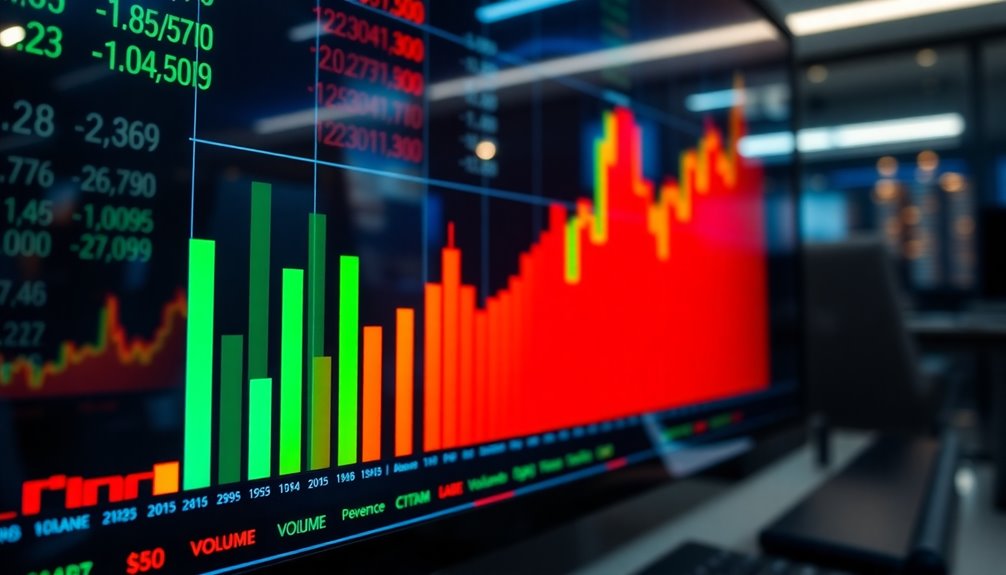
Trading volume and price movements are closely intertwined in the crypto market. Higher trading volumes often indicate greater liquidity, making it easier for you to buy or sell without significantly impacting the price.
Studies reveal a causality relationship; positive volume shocks typically lead to price increases, while negative price shocks can reduce trading volume. This dynamic highlights how volume confirms price trends—significant price changes paired with high volume suggest strong market interest. Additionally, total volume traded during breakouts signals widespread participation, adding credibility to those movements. Understanding this correlation can help you gauge market sentiment and potential price movements, allowing you to make more informed trading decisions.
Market Manipulation Concerns
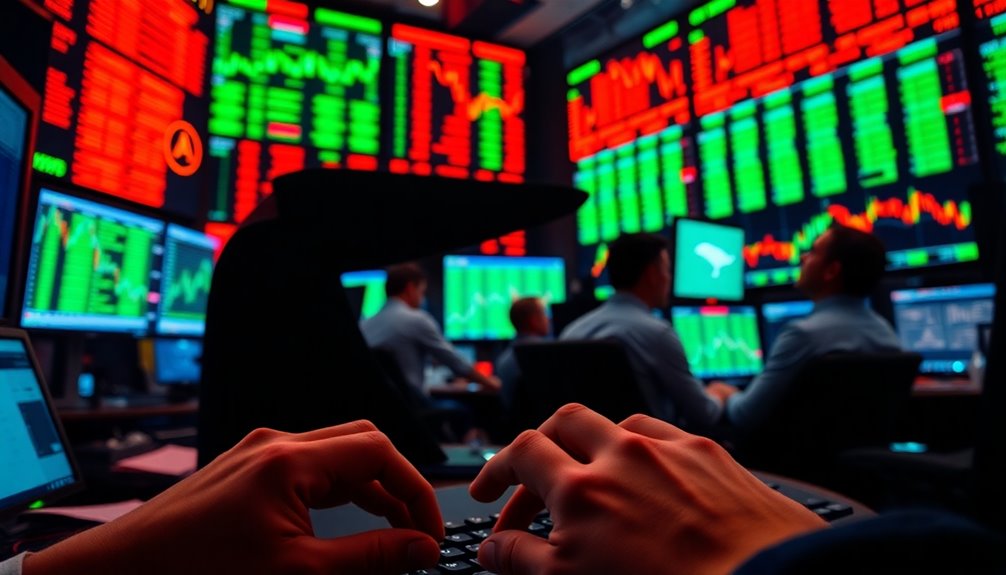
As the crypto market grows, concerns about market manipulation become increasingly prevalent. One major tactic is wash trading, where traders execute transactions that don't change ownership, creating fake volume. This often attracts new investors but can also be part of pump-and-dump schemes that lead to devastating price drops. In fact, a 2022 analysis revealed that over half of Bitcoin trades were fake due to wash trades. Such manipulation distorts market prices, eroding confidence and skewing genuine trends, which can result in significant losses for you as an investor. Moreover, in 2023, 90,408 tokens were flagged for involvement in pump-and-dump schemes, highlighting the pervasive nature of these activities. Although regulators are taking action, including prosecuting manipulators, enforcement still lags behind traditional financial markets, leaving the crypto space vulnerable to these deceptive practices. Additionally, the use of specialized hardware in mining can create an uneven playing field, further complicating market dynamics.
Emerging Defi Volume Metrics
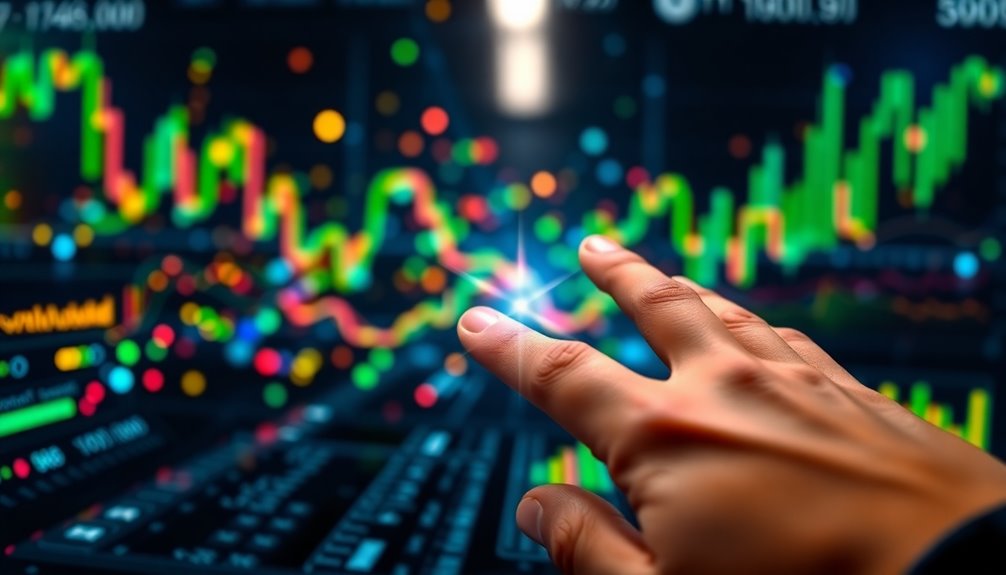
How can you gauge the health of a decentralized finance (DeFi) protocol? One key metric is trading volume, which indicates market activity and liquidity. High trading volumes suggest an active market, making it easier to execute trades with minimal price slippage. Additionally, total value locked (TVL) in DeFi platforms reached $75 billion as of October 31, 2022, serving as a liquidity measure, with high TVL often correlating to increased trading volume, showcasing user confidence.
You should also consider transaction activity; high user engagement can drive up trading volumes and revenue. Lastly, the Network Value to Transaction (NVT) ratio can help assess economic activity—lower ratios suggest the protocol is undervalued. Together, these metrics provide a comprehensive view of a DeFi protocol's health and market standing.
Volume Analysis Techniques

Understanding volume analysis techniques is crucial for making informed decisions in the crypto market. High volume with price increases signals strong buying interest, suggesting a potential uptrend. Conversely, high volume with price decreases indicates selling pressure, often seen during market crashes. Additionally, high volume reflects market activity and participant engagement, providing insights into liquidity and investor sentiment.
Low volume movements might hint at indecision or weak trends. Advanced tools like Volume Profile help identify support and resistance levels, while order books offer real-time buy and sell data, revealing market sentiment. On Balance Volume (OBV) tracks cumulative volume, helping you spot divergences and potential reversals. The Money Flow Index (MFI) gauges money flow, indicating overbought or oversold conditions.
Use these techniques to enhance your trading strategies and make more educated decisions.
Frequently Asked Questions
How Is Trading Volume Calculated in Different Exchanges?
When you're looking at trading volume across different exchanges, you need to sum the volumes for each trading pair in both base and quote currencies.
If an exchange doesn't provide quote currency volume, you can use a specific formula to calculate it.
By aggregating these numbers for each unique pair, you get a clearer picture of overall trading activity.
This data helps you understand market trends and the strength of price movements.
Does Higher Volume Always Indicate Better Liquidity?
Think of trading volume like a busy highway; higher traffic usually means smoother travel.
Similarly, higher volume often suggests better liquidity, making it easier for you to execute trades without affecting prices significantly.
However, don't be fooled—volume can be manipulated, and high numbers don't always guarantee genuine activity.
Always consider the broader context, as sometimes low-volume markets can still offer opportunities despite appearing less liquid.
Keep your eyes peeled!
Can Volume Be Manipulated by Traders?
Yes, volume can definitely be manipulated by traders.
You might see instances where traders use bots to execute wash trades, making it look like there's a lot of activity. This creates a false sense of demand, which can mislead you and others into thinking a cryptocurrency is more popular than it is.
Be cautious, as these tactics can distort market perceptions and ultimately affect your investment decisions.
How Often Should I Check Trading Volume?
Imagine navigating a stormy sea without checking the weather; you'd be lost!
You should check trading volume frequently to stay ahead. For active trading, real-time monitoring is crucial to respond quickly to market changes.
Daily checks give you a solid grasp of trends, while weekly and monthly analyses help you see the bigger picture.
What Role Does Volume Play in Price Prediction?
Volume plays a crucial role in price prediction by indicating market momentum and sentiment.
When you see rising prices accompanied by increasing volume, it often suggests strong buyer interest. Conversely, if prices rise but volume declines, it might hint at weakening momentum.
Monitoring volume trends can help you anticipate potential reversals or continuations in price movements, making it an essential tool for informed trading decisions and effective market analysis.
Conclusion
In the world of crypto, volume acts like the heartbeat of the market, signaling the health and activity of assets. By understanding volume, you can better navigate the ebb and flow of trading dynamics. Remember, while high volume often indicates strong interest, it's essential to look beyond the numbers. Keep an eye on trends and patterns, and you'll be better equipped to make informed decisions in this fast-paced landscape. Stay alert and trade wisely!
